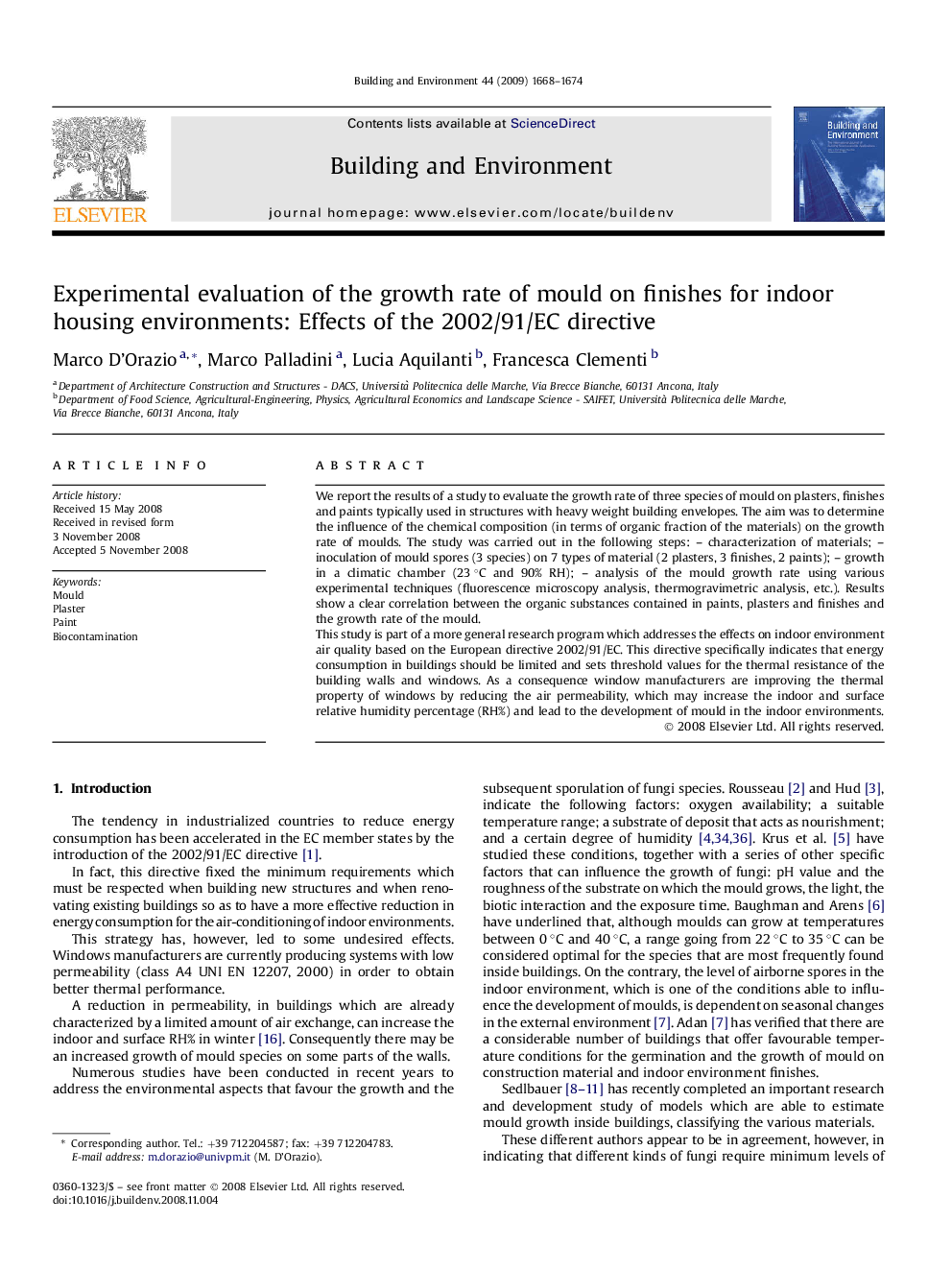| Article ID | Journal | Published Year | Pages | File Type |
|---|---|---|---|---|
| 249348 | Building and Environment | 2009 | 7 Pages |
We report the results of a study to evaluate the growth rate of three species of mould on plasters, finishes and paints typically used in structures with heavy weight building envelopes. The aim was to determine the influence of the chemical composition (in terms of organic fraction of the materials) on the growth rate of moulds. The study was carried out in the following steps: – characterization of materials; – inoculation of mould spores (3 species) on 7 types of material (2 plasters, 3 finishes, 2 paints); – growth in a climatic chamber (23 °C and 90% RH); – analysis of the mould growth rate using various experimental techniques (fluorescence microscopy analysis, thermogravimetric analysis, etc.). Results show a clear correlation between the organic substances contained in paints, plasters and finishes and the growth rate of the mould.This study is part of a more general research program which addresses the effects on indoor environment air quality based on the European directive 2002/91/EC. This directive specifically indicates that energy consumption in buildings should be limited and sets threshold values for the thermal resistance of the building walls and windows. As a consequence window manufacturers are improving the thermal property of windows by reducing the air permeability, which may increase the indoor and surface relative humidity percentage (RH%) and lead to the development of mould in the indoor environments.
